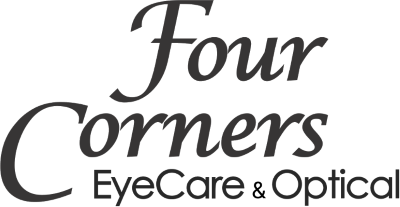Eye Diseases
Cataracts: The natural lens in the eye gradually becomes less clear as we get older. When opacities develop in the lens and the lens gets too hazy or cloudy, vision will be impaired. Our office can diagnose and manage cataract care. When the cataract affects vision to the extent that you cannot read or see distant objects comfortably, we will recommend cataract surgery. Our office co-manages with a cataract specialist, Dr Alan F Bloom, a proven expert in cataract surgery. Cataract surgery can provide you with a bright new world of vision.
Glaucoma: Glaucoma gradually destroys the optic nerve tissue in the back of the eye. The greatest danger of glaucoma stems from the fact that the disease is painless and without obvious symptoms until significant damage has occurred. The most common cause is from pressure being too high inside the eye, but vascular disease and other diseases can also cause glaucoma. We always monitor for glaucoma during comprehensive eye examinations. Tests include checking the pressure in the eye, screening for peripheral vision defects and analyzing the appearance of the optic nerve with laser scanning technology (OCT). If you are diagnosed with glaucoma, we typically prescribe medications that lower the eye pressure. Most forms of glaucoma are successfully treated with eye drops. Laser treatments (SLT) and eye surgery are secondary treatments that offer alternative ways to treat more advanced glaucoma.
Diabetes: Diabetic patients should have a dilated retinal examination each year. Laser treatments have proven to slow the progression of retinal eye disease for many patients. Diabetes often stimulates the growth of new blood vessels in the back of the eye, which ultimately leak and damage the retina. If this condition is discovered early, laser treatment can destroy these vessels. We have the latest instruments used to detect changes in the back of the eye. If we discover advancing diabetic eye disease that can be treated or needs further evaluation, we will refer you for consultation and further testing to a board certified retinal specialist.
Macular Degeneration: It is a slow, progressive, and painless condition affecting the macula, the small central part of the retina that allows you to see fine detail clearly and often affects both eyes, usually one after the other. Once you are diagnosed with AMD, as many as ten years may pass before you have any noticeable loss of vision. Even though breakdown of macular cells may not begin until age 60 or 70, long-term awareness and preventive measures should begin much earlier in life.
There are two main types of macular degeneration (Dry AMD and Wet AMD). Dry AMD which accounts for 90 percent of cases occurs when small yellowish deposits called drusen start to accumulate beneath the macula. These deposits gradually break down the light-sensing cells in the macula, normally causing distorted vision in one eye, then the other. Dry AMD does not usually cause total loss of reading vision. It is important to monitor the progression of dry AMD closely, as it can often progress to the more severe wet form.
Wet AMD accounts for the other 10 percent of AMD cases. It occurs when tiny, new, abnormal blood vessels begin to grow behind the retina toward the macula. Here, they often leak blood and fluid that damage the macula, causing rapid and severe vision loss. Wet AMD almost always occurs in people who already have dry AMD, and results in legal blindness in most of its sufferers.
As the cells in the macula deteriorate, your ability to see will begin to change. Objects directly in front of you appear to change shape, size, or color, and may seen to move or disappear. Your vision may become blurry, lines may become distorted, or dark spots may appear in the center of your field of vision. AMD is a highly frustrating condition, which greatly affects your day-to-day living by making it difficult to read, write, drive, and recognize faces. You also may develop problems seeing in bright sunlight or glare, and find it harder to adapt from dark to light conditions.
Risk factors are age, diet and nutrition (food rich in carotenoids such as lutein and zeaxanthin), sunlight, smoking (AMD is twice as common in people who smoke more than one pack of cigarettes a day), heredity, gender and race (white females over the age of 75 doubles the chance of losing vision) and heart disease.
Annual dilated eye examinations, using specialized laser scanning equipment (OCT) and digital retinal cameras, help the eye care practitioner monitor your eye health to minimize your chances of vision-threatening diseases causing blindness.
